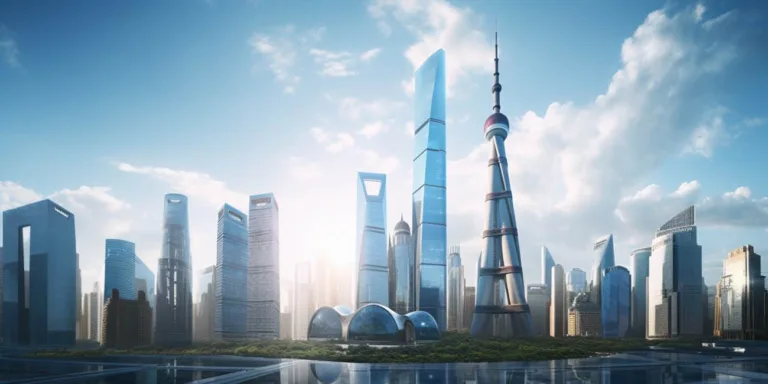Shanghai World Financial Center, or SWFC for short, is a remarkable skyscraper that stands as a symbol of modernity, innovation, and economic prowess in the heart of Shanghai, China. It is an iconic landmark that has earned its place among the world’s most renowned architectural wonders. In this article, we will delve into the fascinating history, architectural features, and the significance of the Shanghai World Financial Center.
The architectural marvel
Designed by the renowned architectural firm Kohn Pedersen Fox, the Shanghai World Financial Center soars 492 meters into the sky. With 101 floors above ground and three basement levels, this colossal skyscraper is a true engineering marvel. The tower’s unique trapezoidal aperture at its peak is not only visually striking but serves an important purpose by reducing wind pressure on the building. This feature showcases the fusion of form and function that characterizes modern architectural masterpieces.
Historical significance
The construction of the Shanghai World Financial Center began in 1997, and the tower was officially opened in 2008. This marked a significant milestone in the development of Shanghai as a global financial center. SWFC’s strategic location in the Lujiazui area of the Pudong district solidified the city’s reputation as an international economic hub, hosting major financial institutions and multinational corporations.
Architectural features
SWFC’s design seamlessly combines elements of traditional Chinese culture with contemporary architectural concepts. One of its most prominent features is the trapezoidal hole at the top, which symbolizes ancient Chinese coins, representing wealth and prosperity. The tower’s façade features a glass curtain wall that gives it a sleek and futuristic appearance.
The observatory deck, known as the Sky Walk, offers breathtaking panoramic views of Shanghai and beyond. Standing 474 meters above the ground, it is one of the world’s highest observatories and is a popular tourist attraction. Visitors can experience the thrill of walking on a transparent floor that provides a unique perspective of the city below.
Environmental considerations
SWFC is not only a symbol of modernity but also a testament to sustainability. The building incorporates various energy-efficient and environmentally friendly features. The tower’s innovative design allows for natural ventilation, reducing the need for excessive air conditioning. Furthermore, it harvests rainwater for reuse and utilizes energy-efficient lighting systems, contributing to a greener and more sustainable future.
The economic hub
The presence of the Shanghai World Financial Center has had a profound impact on Shanghai’s economy and China’s financial landscape. It is home to numerous global corporations, financial institutions, and upscale shopping centers, making it a thriving business hub. The building’s strategic location in the Lujiazui Financial District has made it a focal point for international trade and finance.
1. how tall is the shanghai world financial center?
The Shanghai World Financial Center stands at a height of 492 meters, making it one of the tallest skyscrapers in the world.
2. what is the significance of the trapezoidal hole at the top of the tower?
The trapezoidal hole represents ancient Chinese coins, symbolizing wealth and prosperity. It’s also a unique architectural feature that reduces wind pressure on the building.
3. is the shanghai world financial center open to tourists?
Yes, the tower features an observatory deck called the Sky Walk, which is open to tourists. It offers stunning panoramic views of Shanghai.
4. what is the environmental impact of the shanghai world financial center?
The building incorporates various eco-friendly features, including natural ventilation, rainwater harvesting, and energy-efficient lighting systems, to reduce its environmental footprint.
In conclusion, the Shanghai World Financial Center is not merely a skyscraper; it’s a symbol of China’s economic development and architectural innovation. Its unique design, historical significance, and environmental considerations make it a landmark worth visiting when exploring the vibrant city of Shanghai.
Zobacz także:






